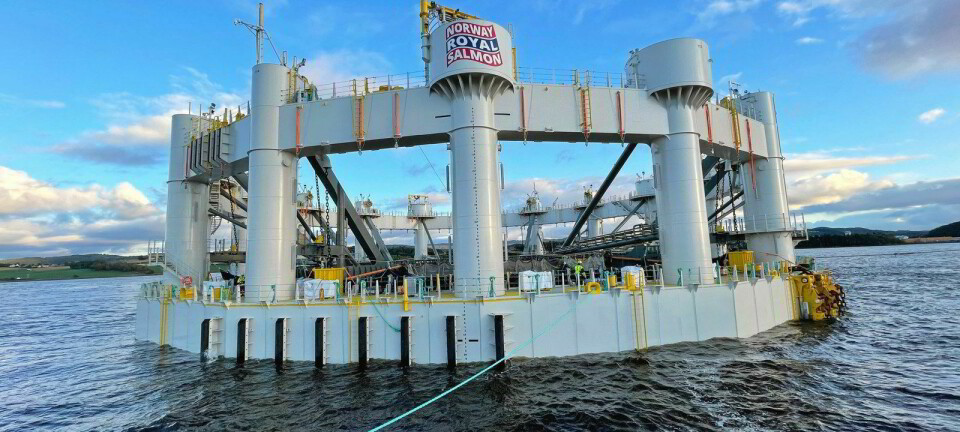
Norwegian fish farmer seeks to produce trout on Chinese ships
Firda Seafood has initiated collaboration with Chinese players on the development of closed, floating facilities for post-smolt production
During the Chinese seafood fair in Qingdao last week, several Norwegian companies were present.
One of them was trout farmer Firda Seafood, which is interested in opportunities to expand its production in Western Norway.
"We used our time well during the fair. In addition to forging stronger ties with customers in the world's largest seafood market, we also took the initiative to collaborate with a highly innovative environment for industrial maritime design," Øyvind Kråkås, public relations officer at Firda Seafood, told Fish Farming Expert's Norwegian sister site Kyst.no.
At the fair, the company was in dialogue with the fishing vessel innovation team at FMIRI, part of the Chinese Academy of Fisheries Sciences, about the development of closed, ocean-going vessels for rainbow trout production.
According to Kråkås, Chinese engineers are far ahead in developing solutions for aquaculture – both on land and at sea.
"What we have primarily challenged them to do is to create large-scale post-smolt facilities at sea that will be among the world's best in terms of operational reliability, costs and energy use."

8k tonnes of post smolt
The collaboration with FMIRI is currently at the design stage, but the plan is for the facility to function as a floating post-smolt facility with an annual capacity of approximately 8,000 tonnes.
"It is too early to say anything about ownership and operation. We are still in an early phase and have challenged the Chinese partners on the design of the concept," explained Kråkås.
Regulations are the biggest obstacle
The trout farming company sees several advantages in producing post-smolt on ocean-going vessels.
"This is a movable and solid construction."
Kråkås nevertheless points out that current regulations in Norway are a challenge.
"All forms of closed production face major obstacles today. The regulations must support new solutions if we are to be able to use them."
Firda envisions that the production of the fish will take place in Norway, based on smolt from the company's existing hatchery.
"We want to produce post smolt in Norway, but preferably with Chinese equipment."
Updated roadmap needed
The company's public relations department believes that the initiative responds well to the challenges raised in both Norway's Aquaculture Report and by political authorities, both of which demand fish farming that has a lower environmental impact.
"The fact that players around the world are getting involved in the development of new types of facilities is a huge advantage for the possibilities of making major progress. At the same time, we must not believe that we can be free riders. An updated roadmap for the future of aquaculture is urgently needed, without it we may be outcompeted."
He believes that the industry in Western Norway must gain access to the portion of maximum allowed biomass that hat has been confiscated under the "traffic light" system and to areas that are suitable for new production, and adds that the administration must open its eyes to the opportunities that lie in innovation and renewal.
"If we work quickly and purposefully, we can turn around several of the challenges that have been held against the industry. We can only understand that the industry, the professional community and critics can agree that this is a good and exciting development," said Kråkås.

























































